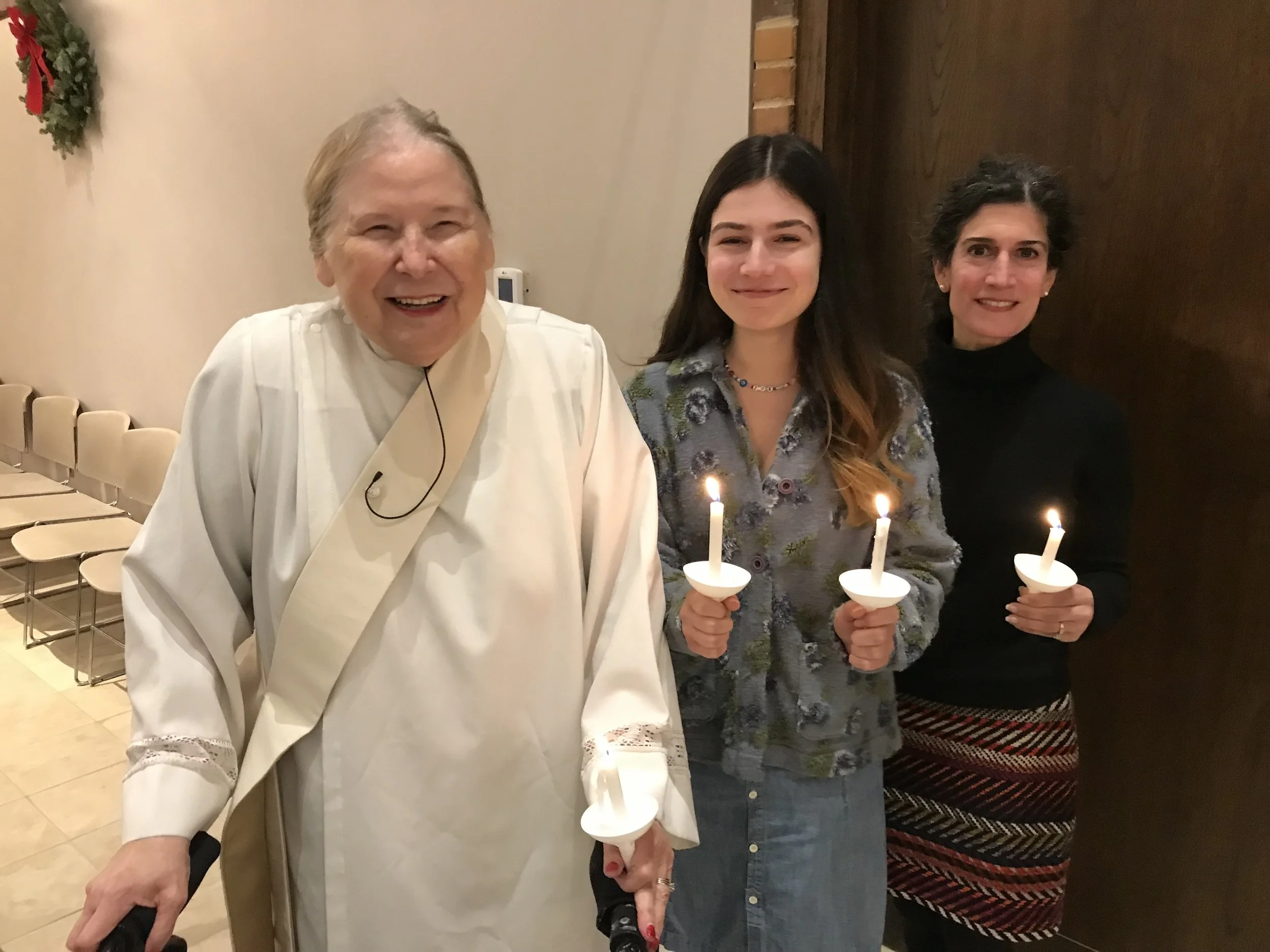The Work of Christmas in Epiphany
“When the song of the angels is stilled,
When the star in the sky is gone,
When the kings and princes are home,
When the shepherds are back with their flock,
The work of Christmas begins:
To find the lost,
To heal the broken,
To feed the hungry,
To release the prisoner,
To rebuild the nations,
To bring peace among brothers [and sisters],
To make music in the heart.”—Howard Thurman, The Mood of Christmas & Other Celebrations
From InwardOutward/ Church of the Saviour Washington D.C. inwardoutward.org.
at Epiphany service
Carrying the love that came down at Christmas with us for the rest of the year is now our calling. Thurman calls it the work of Christmas. I need something to help me remember this. I have a Christmas tree pin I will keep in a dish with other jewelry that I cannot help but notice as I prepare for the day. I may even wear the pin if I have difficulty carrying Christmas love with me during the day.
Anthony de Mello in Sadhana, A Way to God, Christian Exercises in Eastern Form, gives us other suggestions in “Exercise 18: The Joyful Mysteries of Your Life.” He tells us to keep a memory book of times we felt loved or experienced the Christ child within us. De Mello tells us to return to these times and relive the scene, as Ignatius Loyola would have us do. They both suggest we can experience the scene even more vividly in our memory. We could not enjoy it as much at the time for many reasons. Memories of Christmas love are especially meaningful for this exercise. We may have negative experiences at Christmas. We can work on these later with other de Mello exercises (“Exercise 24:Healing of Hurtful Memories”).
Reliving a loving memory can increase our capacity for love and joy. It can overcome our unconscious, instinctive resistance to happiness and love. As we go deeper into the memory, de Mello calls us to look for the presence of the love of the Christ child in the scene. This memory meditation becomes a way to recognize the love of God right beside us at all times.

